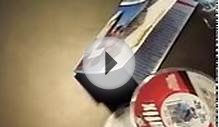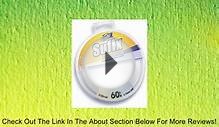
It is extremely likely that the very first fishing outlines were either braided or plaited. Twisting fibres collectively to create a distinct better strength ended up being practiced dating back the bronze age, and that is where fishing with a hook and range probably started. Exactly what started with plant fibres moved on to human being hair, horse locks and silk.
The braided polyester called Dacron by DuPont was being braided before nylon monofilament outlines had been introduced in belated 1930s. Dacron was after the main line for fishing before the breakthrough of plastic. Nylon became therefore superior to braided Dacron, which had poor knot strength, reduced abrasion resistance, and small stretch, that Dacron very nearly vanished from market. These days it really is utilized primarily as a backing product on fly-fishing reels.

Dyneema and Spectra Fibres
In fact, braided lines were not seriously regarded as appropriate recreation fishing purposes before the introduction for the braids we see these days, consists of threads of polyethylene (PE or UHMPE) which can be dominant in the market as Dyneema or Spectra fibre. Dyneema and Spectra fibres are constructed of lightweight high-strength, oriented-strand gel, spun through a spinneret. They've yield strengths as high as 2.4 GPa (350, 000 psi) and specific gravity only 0.97 (for Dyneema SK75).
High-strength steels have actually comparable yield skills, and low-carbon steels have yield strengths reduced (around 0.5 GPa). Since metal has a particular gravity of approximately 7.8, this provides strength-to-weight ratios of these products in an assortment from 8 to 15 times more than steel. Strength-to-weight ratios for Dyneema are about 40% more than for Aramid (so called Kevlar). Dyneema ended up being conceived by Albert Pennings in 1963 but made commercially readily available by DSM in 1990.
Improvement the Braided Range
Braided outlines are made from several individual fibres of either Dyneema or Spectra product. The amount of fibres that make up the braid control the characteristics for the last product, but during and after the braiding process other procedures usually takes location to replace the qualities of this finished line. Both Dyneema and Spectra fibres are far more or less inert. This means that they never respond with or to such a thing. In the early days of the brand new generation of braided lines, producers had difficulty in including color into the standard white material. The colour would leach completely quickly. Numerous area finishes were put into the braid. Some made the range gluey, other individuals managed to make it too rigid, although common result had been your finish rapidly wore down.
Needless to say, through the years the producers surely got to learn about their products or services, and all created colouring or finishing technologies that have been appropriate for the advanced level fibres they were utilizing. As brand-new Dyneema and Spectra fibres were created, fishing lines got thinner, and braiding techniques enhanced to use the new fibres. The technologies of manufacturing advanced fibres, as well as braiding all of them and completing them continues to move ahead, therefore we can enjoy continuous development of this industry for decades in the future.
RELATED VIDEO












